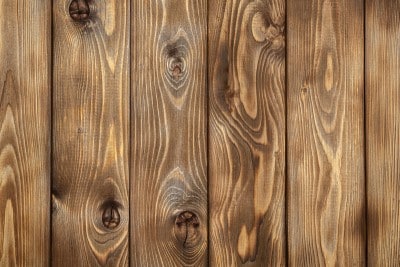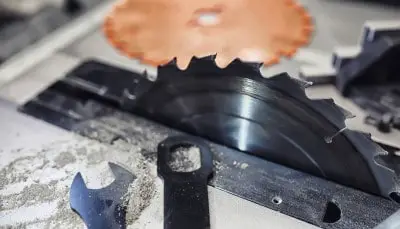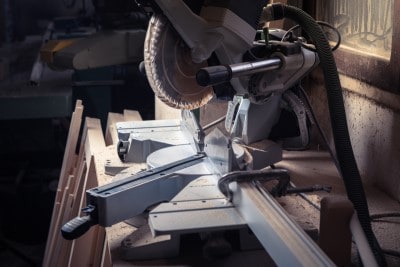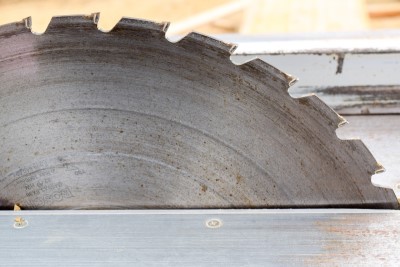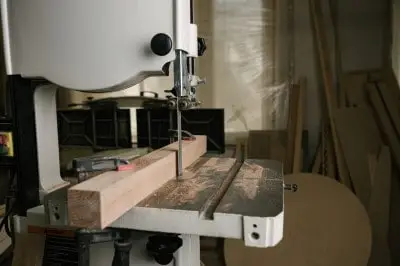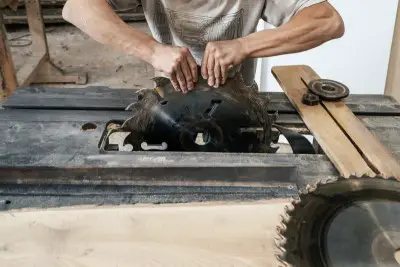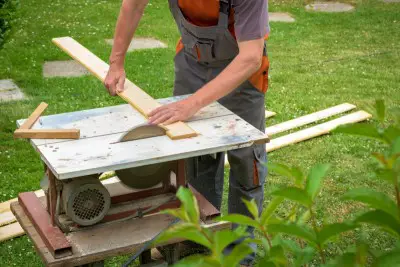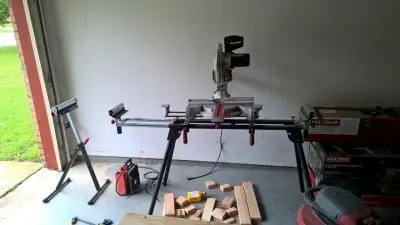When dealing with an electric power saw, there are many variables (as you might expect from such a complex piece of equipment). It is not uncommon to encounter mechanical problems when using an electric saw; some of them are unpreventable, however, some of them are not.
These issues are exacerbated by the fact that you are likely preoccupied by the actual building job you are doing. For this reason, certain issues with your electric saw tend to go unnoticed. If you notice that your saw is burning the wood during the cutting process, it can be very frustrating, especially since there are many different reasons as to why this might be happening.
The most common reason your saw is burning the wood is due to a dull blade; when cutting wood with a dull blade, this creates friction which in turn produces heat. Other common sources for wood burn include using the wrong blade, using a dirty blade, or a too-slow feed rate.
That said, there are many other factors that can cause woodburn when using an electric saw. In this article, we will go over every single one of these common factors and discuss how you can prevent them from occuring.
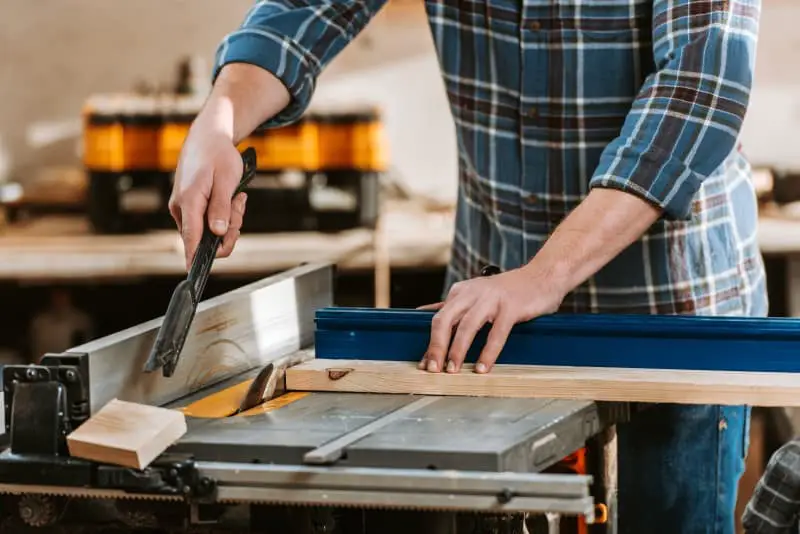
But first, before you learn how to prevent wood burn, you must understand what it is exactly.
What is Wood Burn?
Wood burn occurs when, quite simply, your electric saw heats up the small fibers that make up the wood material so much that they start to burn. Wood has a certain ‘ignition temperature’, which is the temperature required for the wood fibers to start to ignite.
As you know, wood is flammable – this is why during particularly hot and dry summers, governments put campfire bans in place. It is a very flammable material, and not many people realize that your electric saw, a powerful tool in its own right, can actually cause enough heat to burn the wood by itself.
Wood burn is used for art and other purposes; you have probably seen, at one time or another, ‘wood-burn art’ where drawings are etched into wood by use of a poker. For these cases, wood burn is seen as advantageous; but, as you likely know, wood burn is not at all ideal for building or construction and must be avoided at all costs… it can actually ruin an expensive piece of wood, thus requiring more expenses and more time cutting.
The type of wood you are using can have an impact on how easily woodburn might occur. For example, cherry, mahogany, maple, and purple heart wood are all more flammable than average so they tend to get woodburn more easily than other types; while this is somewhat helpful, you are probably using your wood or have chosen your wood for a specific reason, therefore it is not as simple as buying less-flammable wood. So, it’s important to know how to prevent woodburn even if you are using wood that is easily burned.
Let’s take a look at all the reasons why your electric saw might be causing woodburn.
Read more: How Do You Remove Saw Burn Marks From Wood
10 Reasons Why Woodburn Occurs (And How-to Fix)
The reason your saw is causing woodburn may be your fault or the machines’ fault; whatever the case, it is an annoying and sometimes persistent problem that can likely be fixed, often quite easily.
Consider these ten causes and use your newfound knowledge to try and determine why you might be experiencing woodburn.
Dull Saw Blade
A dull blade on your electric saw accounts for around 90% of the cases where woodburn is occuring. The reason is quite simple; dull blades don’t cut as fast as sharp ones do. This causes friction, which in turn causes heat, which (as you might guess) can cause woodburn.
The fix for this issue is to either:
- Buy a new saw blade.
- Sharpen your saw blade.
As you probably know, blades can be quite expensive – a quick sharpen will usually do the trick.
If your blade is very sharp and you are still experiencing woodburn, then it could be another reason.
Slow Feed Rate
Electric saws are designed to cut wood very fast, which is why they are so useful for anyone who is doing serious amounts of wood cutting. But, sometimes a common issue is that the ‘user’ is feeding the blade too slowly, which causes excessive rubbing on the sides of the wood, which then produces friction and, you guessed it, woodburn.
If you are a beginner, it is possible that you are being cautious and cutting too slowly – if this is the case, the fix is simple; if you think your woodburn might be due to your slow feed rate, try going faster! That’s what the tool is meant for, anyway.
Slow feed rates account for a lot of the woodburn cases for most people. But, if it is neither a dull blade or a slow feed rate, there are many other sources that could be a factor as to why your are getting woodburn.
Dirty Saw Blade
Yes, it is not just a dull blade that causes woodburn – a dirty saw blade can also have the same effects on the wood you are cutting.
Basically, the dirt on your blade is heating up due to the friction; this is made worse because a dirty blade will not cut as fast as a clean sharp one.
So, if you are experiencing woodburn and it is not due to a dull blade or slow feed rate, check to make sure your blade is cleaned! A simple rub-down with some WD40 or similiar substances should do the trick… just make sure to regularly clean your blade so the woodburn doesn’t happen again.
Dirty saw blades, slow feed rates, and dull blades account for almost all woodburn; that said, it is certainly possible that there is a different reason you are experiencing this.
Bent or Warped Blade
A warped or bent blade can cause wobbles, which means your blade is rubbing off the wood in a way that it should not be. Not only is this not ideal for precise cutting, but it could also be the source of woodburn.
Another thing to note is that a warped or bent blade can actually happen because of heat in the first place; so, if woodburn has been a consistent problem with your electric saw, this can be a vicious cycle that gradually gets worse over time.
If woodburn is occurring, inspect your saw blade and determine whether it needs to be replaced. Cutting with a warped blade is dangerous since it can cause significant kickback, especially if the warping is severe.
Miter Slot Blade Alignment
The alignment of the miter saw blade can cause woodburn as well.
So, if you are experiencing woodburn while cutting wood, double-check to ensure that the slot is aligned with the blade.
Warped or Wet Wood
It is also possible that your woodburn has nothing to do with you or the saw itself, but actually has to do with your wood.
Is it wet or damp wood, or possibly warped? If it is, then your electric saw will not be cutting the same way it would with normal, dry wood; these abnormalties can cause friction, heat, and then woodburn.
Simply analyze your wood to see if that is the problem and then make the decision on whether you need to wait until it dries or use other wood.
Blade Height
Your saw’s blade height completely changes how the wood is cut; it can affect the angle at which the saw makes contact with the wood.
Low or improper blade height can mean your saw is cutting above its league – try adjusting, if possible, and seeing if that does the trick.
Misaligned Splitter
A splitter for your electric saw is crucial because it prevents binding around the blade by the wood. If you have a misaligned splitter, then it is not doing its job correctly and can be the source of heat and friction on the wood, thus causing woodburn.
Check to see if your electric saw’s splitter is misaligned; if so, fix it, and see whether that solves your woodburn. Your saw needs to run straight in order to cut properly, so you must make these changes in order to solve this issue.
Blade Parallel To Fence
This is perhaps the easiest of all woodburn causes to fix.
Quite simply, check to make sure your electric saw blade is parallel to the fence – if it isn’t, then this could be the cause for your woodburn.
Wrong Blade
Cutting wood with the wrong blade is an easily preventable yet entirely common mistake that some amateurs make – luckily, it’s not difficult to solve.
All you have to do is make sure you are using the appropriate blade for the wood cutting job you are undertaking; if you don’t know which is which or don’t understand the differences between blade types or why it’s important, then do your research… otherwise, woodburn will likely happen in the future as well.
These are the ten most common reasons why your electric saw could be causing woodburn – if you’ve checked and fixed each of these issues and are still experiencing woodburn, try taking your saw into your local hardware store and ask for advice.

